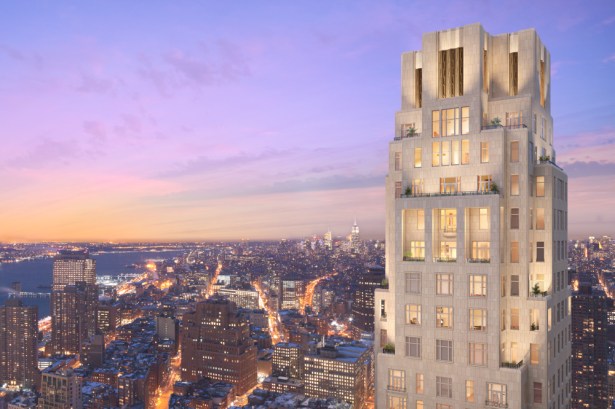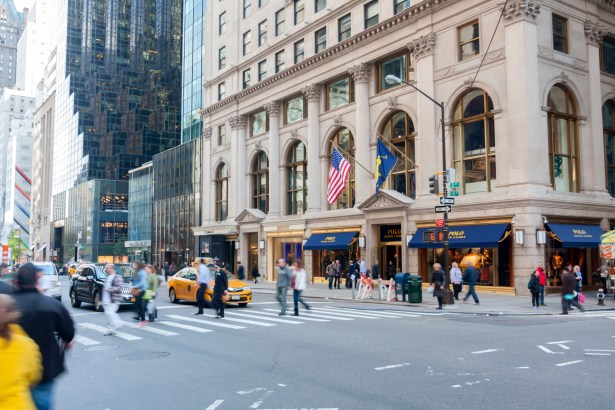Making Sense of 2017 as the Real Estate Market Has Returned to Earth
By Liam La Guerre December 13, 2017 9:00 am
reprints
By almost every objective measure, the United States economy has been performing excellently.
Approximately 1.9 million more people got jobs over the last year and the unemployment rate fell to 4.1 percent in November from 4.6 percent a year earlier, according to statistics from the United States Department of Labor.
Investors are enjoying an unprecedented bull market, smashing through records on a weekly basis. As of the writing of this article, the Dow has surpassed 24,300, up more than 22 percent since this time last year when it was around 19,800. The S&P 500 broke 2,600, growing 17 percent year-over-year from above 2,200, and the Nasdaq has boomed past 6,800 this year up about 26 percent since it hovered over 5,400 at this time last year.
But is it the same happy story with real estate?
In New York City, anyway, there have been sharp decreases in investment sales and luxury condominium unit sales. And, as is the case nationally, the retail market has been hideous.
“From attorneys to brokers there is less business going on and less transactions happening,” said David Bistricer, the managing member of Clipper Equities. “There was a lot of activity going on [in the prior years]. I think the market needed to settled down a little bit.”
But, like many others Commercial Observer spoke to, he was not yet ready to concede that real estate was heading into a recession—certainly not like the last big real estate bubble.
“I don’t see any signs of a 2008 correction at all,” Bistricer said. “I think the conditions of 2008 are not present in today’s market. There is an enormous amount of money chasing properties. What is going on in the rest of the world is scary, and people are coming to the United States to gateway cities. People are coming to New York because it’s a safe haven, and that is what is driving [prices].”
Others, however, were a little more negative about New York City’s prospects.
“A banker once said to me, ‘It feels like the 10th inning of a nine-inning game,’ ” said Francis Greenburger, the founder and chief executive officer of Time Equities. “I think everyone knows that this has been a very extended cycle. And nobody knows why, but cycles have beginnings and ends.”
Investment sales have taken a huge hit in 2017. The city is on pace to log $32 billion to $33 billion in property sales, according to Robert Knakal, Cushman & Wakefield’s chairman of New York investment sales. That would be 44 percent less than 2016’s figure and 59 percent below 2015’s, when it hit $80.4 billion, an all-time record.
In Manhattan in particular the 2017 investment sales total is expected to come in at $19 billion to $20 billion—down 52 percent from last year and 70 percent below 2015’s $63.2 billion, Knakal said. The number of transactions in Manhattan is on pace this year to get to 605, compared with 761 last year and 1,093 in 2015, according to Knakal.
“The sales side is down as transactions are way down. That applies to all asset classes,” said Adam Hakim, a managing director at Eastern Consolidated. “People are asking too much and [investors] want to pay less.”
Despite the drop in transactions and the tug of war between bid and ask prices, there have been some deals of note this year, although only two that cleared the $1 billion mark. HNA Group’s $2.21 billion purchase of 245 Park Avenue from Brookfield Property Partners in May has the top spot so far this year, followed by GIC Real Estate’s $1.04 billion buy of 60 Wall Street from Paramount Group in January. For comparison, there were seven deals that were over $1 billion last year.
“We are 27 months into a correcting market. And 26 months ago I predicted this was going to happen,” Knakal said. “I am not happy that I was right. These numbers stink; this is a crappy year relative to the past.”
Values have already begun to nudge downward, Knakal said, but that means activity will likely pick up. However, he added that we won’t see the number of deals increase until 2018, and even then values could continue to fall.
“Even these relatively modest reductions have created activity,” Knakal said. “We have signed 18 contracts within the past two months. That is the pace that it used to be two years ago. Unfortunately, none of these will close in 2017. It will impact 2018 numbers.”
Brooklyn real estate activity also regressed in 2017. The number of transactions is down to 2,006 from 2,446 a year ago and 2,999 in 2015, and dollar volume so far for this year is at $8.6 billion, according to CPEX Real Estate, which tracks deeds daily. The entire annual number for 2016 was $9.3 billion and the total for 2015 was $10.1 billion. But the value of the properties is higher this year in Kings County, at $613 per square foot versus $496 per square foot a year ago, and $396 per square foot in 2015.
“Brooklyn is still very, very strong,” said Timothy King, a managing partner of CPEX. “There is so much momentum in Brooklyn that that market is going to stay strong for the foreseeable future. The number of sales is way down, but the price per square foot is way up. What does that tell you? The demand is so strong that whatever little bit of product comes on the market people are paying very significant dollars for it.”
It won’t be that way forever though. As Manhattan prices start dropping from its highs to meet prices that buyers are willing to transact at, the outer boroughs will start to feel the effect, too.
“Whatever happens in the city happens in Manhattan first,” Knakal said. “We expect next year we will have values down across the boroughs.”
The biggest question is whether or not the current bull market is reminiscent to that of 2007 but with different hot spots. It was the subprime crisis of 2007 that kick-started the global financial crisis, eventually bringing down Bear Stearns, Lehman Brothers and almost AIG: An exuberant market not only crashed hard but also took the entire economy down with it.
During that great recession, banks stopped lending money due to a credit crunch brought about by an overheated housing market. Today, banks have money to lend, but are doing so more cautiously, partly due to significantly increased regulation since the crash.
The combined financing for the sales of multifamily, office, retail, industrial, hotel, condos and garages was at $12.5 billion for 2,521 properties across the city year-to-date in 2017, according to information provided by commercial mortgage data firm Actovia Founder Jonathan Ingber. That compares to lending for 3,131 properties in the Big Apple in 2016 at a total of $22.5 billion.
“Across the board there is a lot of supply and the big commercial banks have pulled back big time,” said Jeff Fastov, a senior managing director at Square Mile Capital Management. “They are looking to reduce their advance rates, and they are being much more selective.”
One segment of the market that is probably in for more pain is luxury condos, which has seen a large oversupply of expensive units.
“If you go around to the new developments, nothing is selling,” Greenburger said. “Below $2.5 million, condos are selling very quickly. Above $2.5 million, which is most of the market, the air is very thin. This is not a sign of health. This is a sign that the market is in a transition.”

Although transactions are down in the sector and developers are realistic about the prospect for the wild successes of the One57s or 15 Central Park Wests of yesteryear, there’s little concern that it could damage the overall real estate market.
“I’m not sure where all of the money is going to come from to buy all of the pricey units,” said Larry Silverstein, the chairman of Silverstein Properties, whose portfolio includes 30 Park Place, a luxury condo tower and Four Seasons Hotel where Silverstein himself bought a unit. “But most of the stuff that is being built today is being built by developers with deep pockets. If they can’t sell the apartments, they are going to rent [them]. But I don’t think we have enough of the poorly financed projects or shallow-pocketed developers to make a difference.”
Of course, luxury condos are nothing in comparison to retail, which saw many of the oldest and most respected department stores and other chains around the country announce bankruptcies, store closings and job cuts.
In Gotham, the Ralph Lauren Corporation announced it would close its 36,000-square-foot Polo flagship at 711 Fifth Avenue in April (paying $70,000 per day for the shuttered space while searching around for a subtenant). And Bebe, which is shutting all of its 170 stores nationwide, closed its location at 1 West 34th Street. Lord & Taylor’s parent company Hudson’s Bay Company also sold the flagship building at 424 Fifth Avenue to WeWork and Rhône Capital in October for $850 million. Lord & Taylor will reduce its footprint to 150,000 square feet from the entire 676,000-square-foot building.
In response to the abundance of availabilities with high asking rents landlords appear to be dropping prices for spaces across Manhattan, fewer deals are getting done and vacancies are popping up.
“The Manhattan retail leasing market is still in a corrective period. The increased rents of previous years are receding,” according to the Real Estate Board of New York’s fall 2017 retail report, released late last month. “Deals are still getting done, but they favor parties willing to be flexible with deal structure, uses, asking rent adjustments and increased concession packages.”
The report highlights that ground-floor retail asking rents have declined year-over-year in 13 of the 17 high-profile corridors of the city.
Bleecker Street between Seventh Avenue South and Hudson Street saw the largest fall—a 25 percent decline to $351 per square foot compared with $471 per square foot at the same time last year. The Fifth Avenue corridor between West 14th and West 23rd Streets in the Flatiron District saw the biggest percentage increase as ground-floor asking rents rose 15 percent to $449 per square foot year-over-year.
“You are seeing a readjusting in pricing and hopefully that will bring other retailers back into the marketplace,” said William Rudin, the CEO and co-chairman of Rudin Management Company, who has been elected the next chairman of REBNY.
And while there wasn’t a big Fifth Avenue splash this year like 2016’s 70,000-square-foot Nike deal at 650 Fifth Avenue, there were some notable deals around the city.
Vans took an 8,573-square-foot space at 530 Fifth Avenue and denim company Levi’s signed a 17,250-square-foot deal at 1525 Broadway to shift its Times Square location a block.
“The market was not devoid of deals we just had less deals,” said Gene Spiegelman, a vice chairman at C&W who specializes in retail. “Rents will come down. They are already coming down, and deals will get done at lower rents in 2018.”
He added, “Did we have a good year in leasing on Madison and Fifth Avenue? No. But it’s not a bad year. We are at the middle of the cycle in our most expensive markets in New York City, and I think we are in the middle of the reimagination of retail [in general].”
Capitalizing on the desire for more experiential retail, Lionsgate Entertainment and partner Parques Reunidos signed a 45,000-square-foot deal at 11 Times Square for a $30 million attraction called Lionsgate Entertainment City. And British investment group Archimedia signed 60,000 square feet at 250 West 55th Street for Spyscape, a spy museum and experiential attraction.

Other notable retail deals included Gucci signing a 10,700-square-foot lease at 375 West Broadway in Soho, Old Navy taking 18,500 square feet at 1289 Lexington Avenue on the Upper East Side and Target signing a 43,000-square-foot deal at 112 West 34th Street in Herald Square.
Also, Toys “R” Us, which filed for bankruptcy protection this year, opened a 35,000-square-foot pop-up at 1466 Broadway in Times Square in August. (Just last week, legendary toy store FAO Schwarz took a 19,000-square-foot space in Rockefeller Center at 30 Rockefeller Plaza, as CO recently reported.)
Across the bridge, the company behind Chelsea Piers signed a 52,000-square-foot lease at the base of 33 Bond Street in Downtown Brooklyn and Whole Foods Market (acquired by Amazon this year) signed a 43,000-square-foot transaction in Fort Greene for its first 365 by Whole Foods Market in the tri-state area. In addition, Japanese-themed food hall Japan Village took 20,000 square feet in Industry City in Sunset Park.
In Queens, Regal Cinemas signed a 38,000-square-foot movie theater deal at 38-01 Queens Boulevard in Sunnyside and South Korean theater chain CJ CGV took 34,000 square feet in Flushing at 37-09 College Point Boulevard.
Thirty-six percent of the retail deals in Manhattan through mid-October were food-and-beverage related, according to C&W (a slight drop from 40.5 percent in 2016). One of the biggies was chef José Andrés’ ThinkFoodGroup, which took 35,000 square feet for a Spanish-themed food hall at Hudson Yards.
“The big driver for the last couple of years has been food service and fast casual,” David Firestein, a partner of SCG Retail, said. “That’s where the growth has been.”
One of the market’s most positive spots was office leasesing. According to CBRE, leasing activity in Manhattan hit 26.2 million square feet at the end of November. That’s 3.3 million square feet more than the figures for all of 2016 when it was 22.9 million (or a 14.4 percent increase so far). And the average asking rent has been flat at just under $74 per square foot.
Also, 2017 is on pace to rank second for leasing activity in the past decade, behind only 2014 when there was 29.9 million square feet leased. In addition, large deals (100,000 square feet or more) accounted for 26 percent of the activity this year.
“Market performance is tied, as always, to economic growth—New York City office-using employment continues to expand, the unemployment rate is near its historic low, and the city’s [gross domestic product] growth is strong,” Mary Ann Tighe, CEO of CBRE’s New York Tri-state region, said in a statement. “All of this bodes well for the start of next year.”
Another reason for the great finish is companies are looking to relocate and modernize offices to attract and retain employees. And landlords have increased tenant improvement packages to an average of $71.40 per square foot, as of Dec. 1, up from $61.65 per square foot in all of 2016, according to Colliers International. Landlords are also offering more free-rent periods, averaging 10 months, compared with nine months in 2016.
“[Tenants] want to change their image and become more contemporary and reimagine themselves, and that’s why they are coming into the city and expanding into the city,” Rudin said.
Among the biggest office leases of the year, News Corp. and 21st Century Fox renewed and extended the lease for their respective headquarters to 1.24 million square feet (if you count them together) at 1211 Avenue of the Americas and 1121 Avenue of the Americas; AllianceBernstein renewed its 992,043-square-foot deal at 1345 Avenue of the Americas; BlackRock took 847,000 square feet at 50 Hudson Yards in May, and accounting firm EY (formerly Ernst & Young) signed a deal for 604,169 square feet at 1 Manhattan West. (See our roundup on page 29.)
These deals underscore that transactions are still occurring, and many real estate pros expect the pace to increase.
“Economic cycles go in seven- to nine-year increments, and we are at the tail end of that period now. Typically, we’d expect to see a downturn on the horizon,” Tighe said. “That said, certain economies have gone much longer in an up cycle—Australia is now in its 25th year. And with chances for a significant corporate tax cut looking good, we could see more employment growth next year.”


